Tufted Duck
(Aythya fuligula).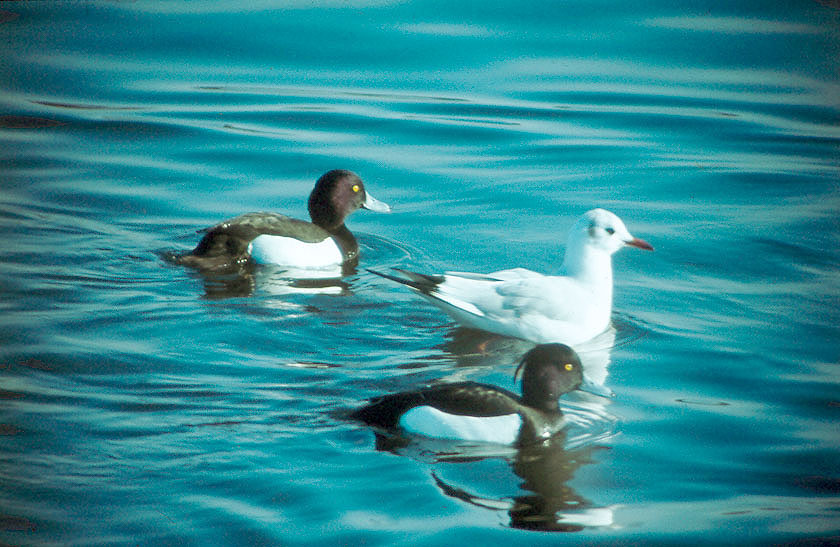
Tufted Ducks in Roskilde harbour.
The Tufted Duck is, together with the Coot, the most common bird in the fjord in the winter. It comes here in October, when the Siberian winter starts to freeze the water in its breeding grounds.
In the fjord the Tufted Duck lives well on the very dense populations of Common Mussel, which cover large parts of the fjord bed. These mussels are too small for human eating, but just the right size for a Tufted Duck.
The main daytime roosting site during is Kattinge Lake, where there are often about 20,000 birds packed together in one dense flock. There are also frequently large flocks roosting in Selsø and Store Rørsø on Eskilsø.

A flock of Tufted Ducks on Kattinge Lake.
They sit passively on the lake all day long, but about an hour after sunset, when it is properly dark, the whole flock takes to the air as one and goes out onto the fjord to feed. They prefer the shallow areas with moving currents around Eskilsø, but use more or less every part of the fjord except the middle of Bredningen. In the morning they return to the lakes as soon as it begins to grow light, but this return takes place in a more haphazard manner.
In December 1984 the ducks’ foraging expeditions were tracked using radar at the Værløse airbase. You can see an example of a typical expedition from Store Kattinge Sø here. The pictures show the flock of Tufted Duck as a shadow on the radar screen. A picture was taken every 40 seconds, from when the ducks took off from Katting Sø until they settled around and to the north of Jylling Holme. Although the pictures are from 1984 there is no reason to think that their behaviour has changed since then.
The total winter population on the fjord is about 35,000. This is 3-5% (1 in 25) of all Tufted Duck on the northwest European migration route, which means that from the point of view of conservation this area is of international significance for the Tufted Duck.
If Kattinge Sø is frozen the ducks have to move elsewhere. The cooling-water outlet by the nuclear reactor at Risø, and Roskilde harbour, were formerly important roosting places, but now that the reactor and the sewage outlet in the harbour have both been closed there are only a few places left where the water never freezes over, so the Tufted Duck has to move on to Holland if the ice lasts for more than a short time. Many other water birds also winter just far enough south to avoid the problem of ice covered water.
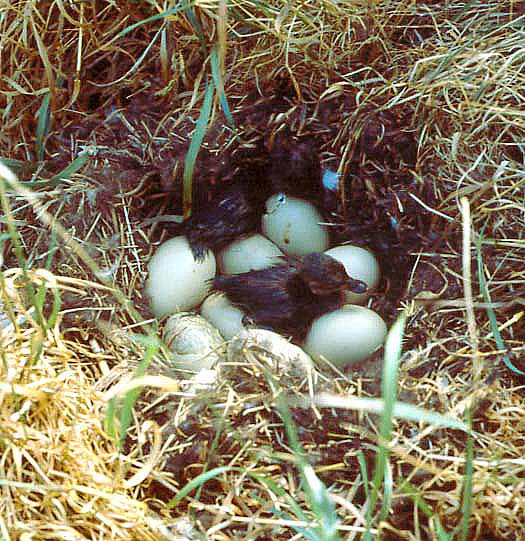
A Tufted Duck nest on Langholm in Lejre Vig.
The Tufted Duck has also recently developed a small breeding population on the islets in the southernmost part of the fjord. There has been a steady increase for the past 37 years and the population on the islets in Lejre and Kattinge Vig is now about 40 pairs.
The best way to see the Tufted Duck is to go to Kattinge Sø just before the ice comes. There is an excellent observation post for bird watchers, and for a wonderful - if short-lived - experience, wait until an hour after sunset and hear the whirr of wings as a flock of 20,000 ducks passes just above your head.
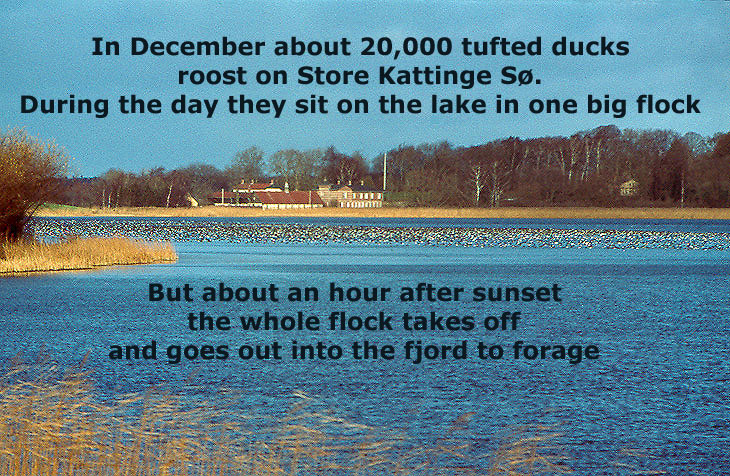
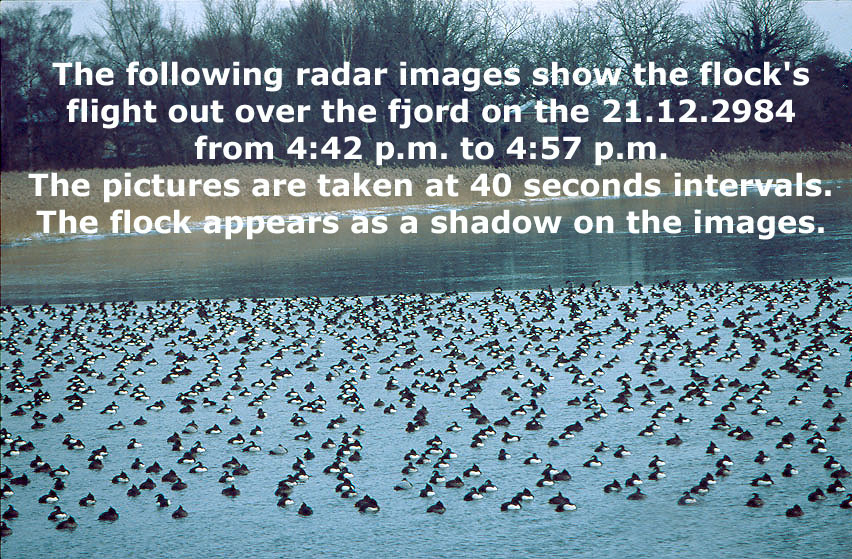



























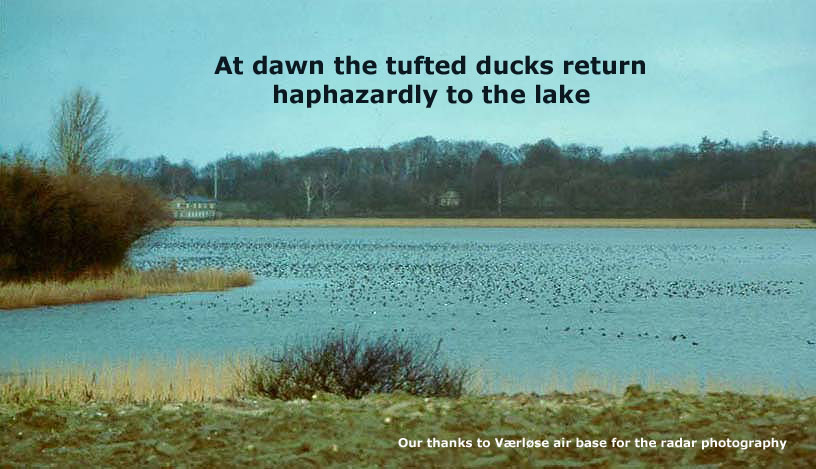
Key to the Distribution Map.
Tufted Duck - population trends
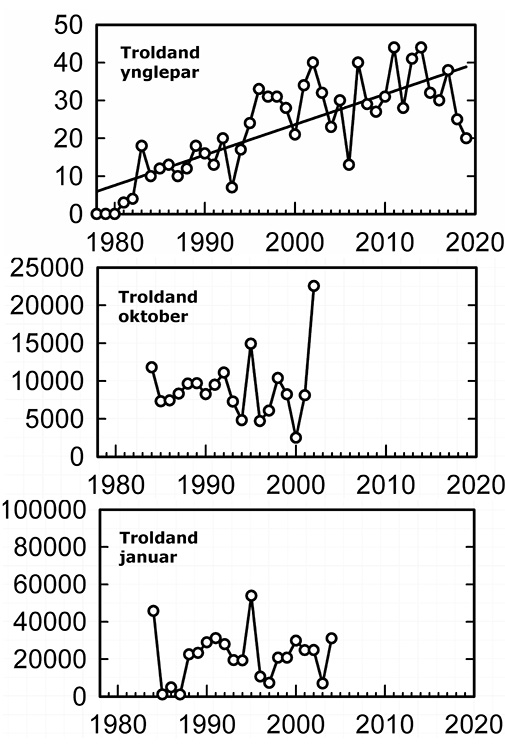
Tufted Duck breeding pairs
Tufted Duck October
Tufted Duck January
